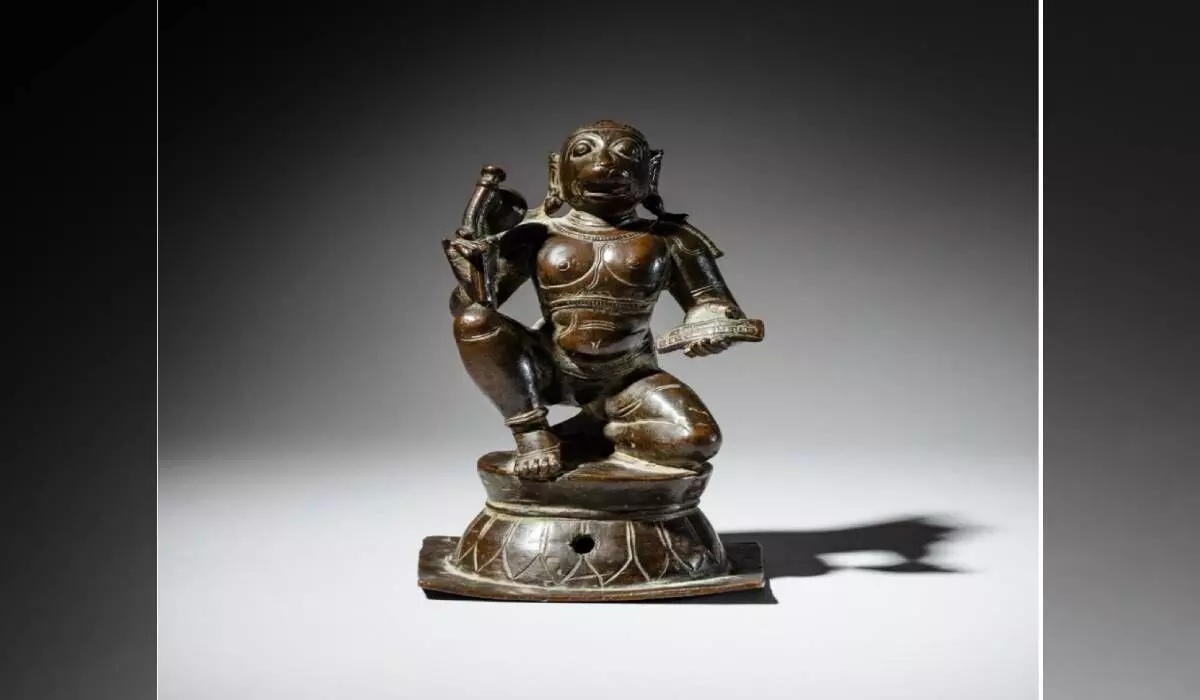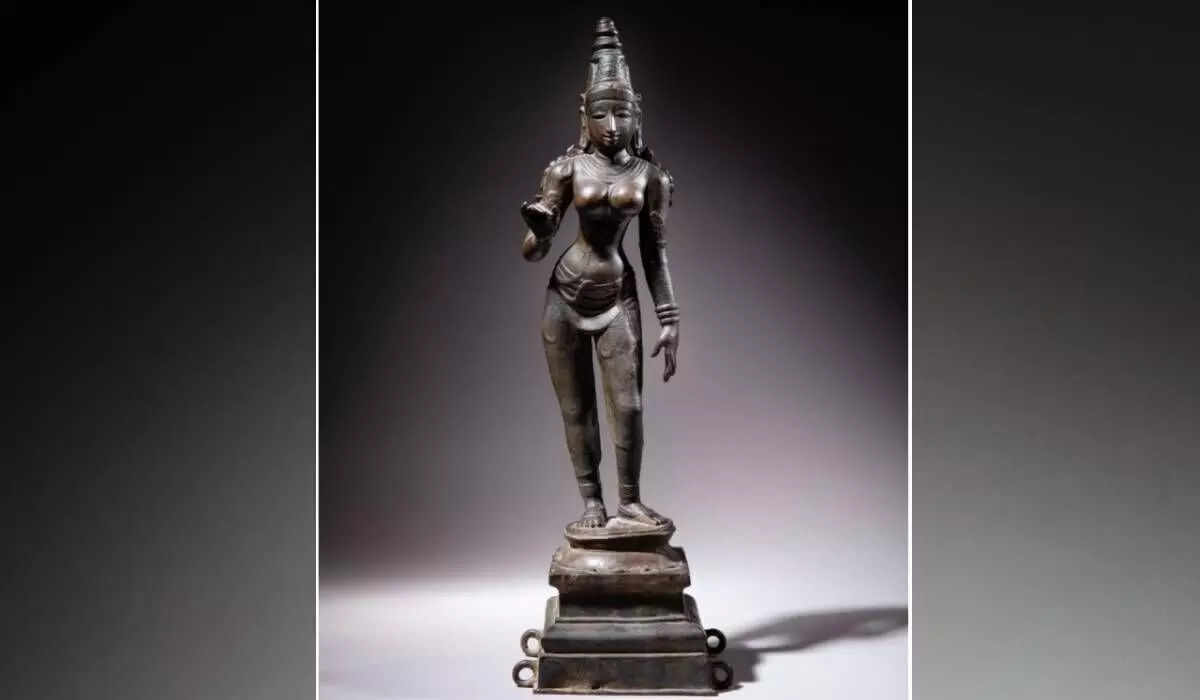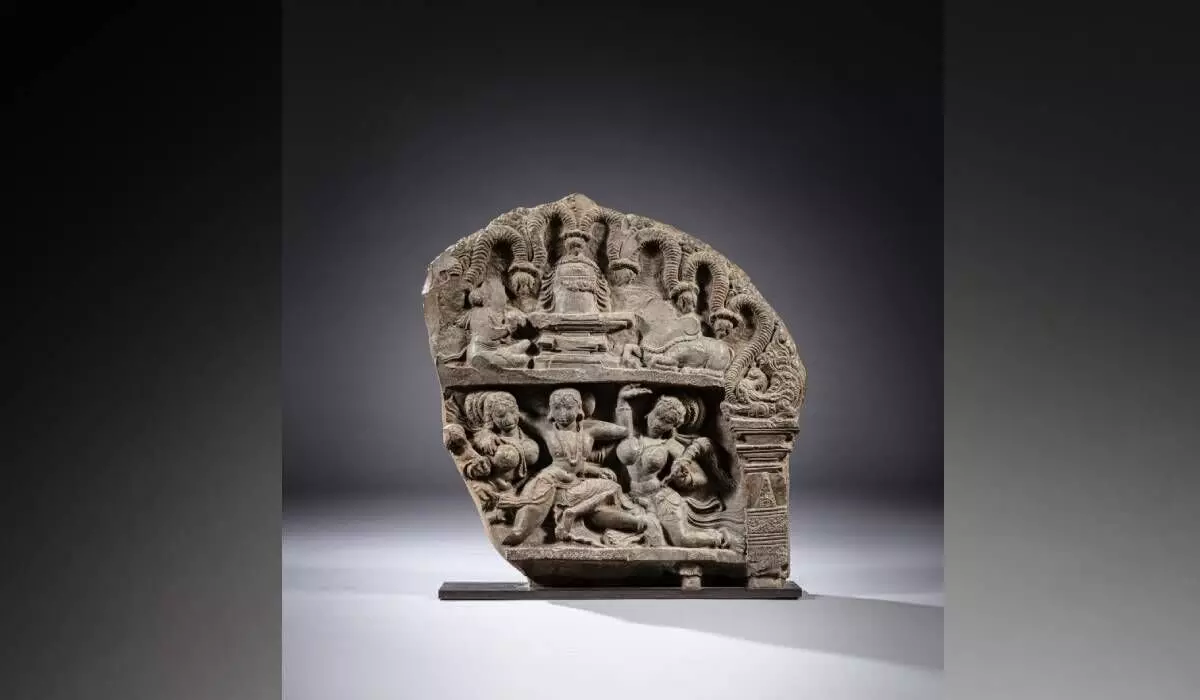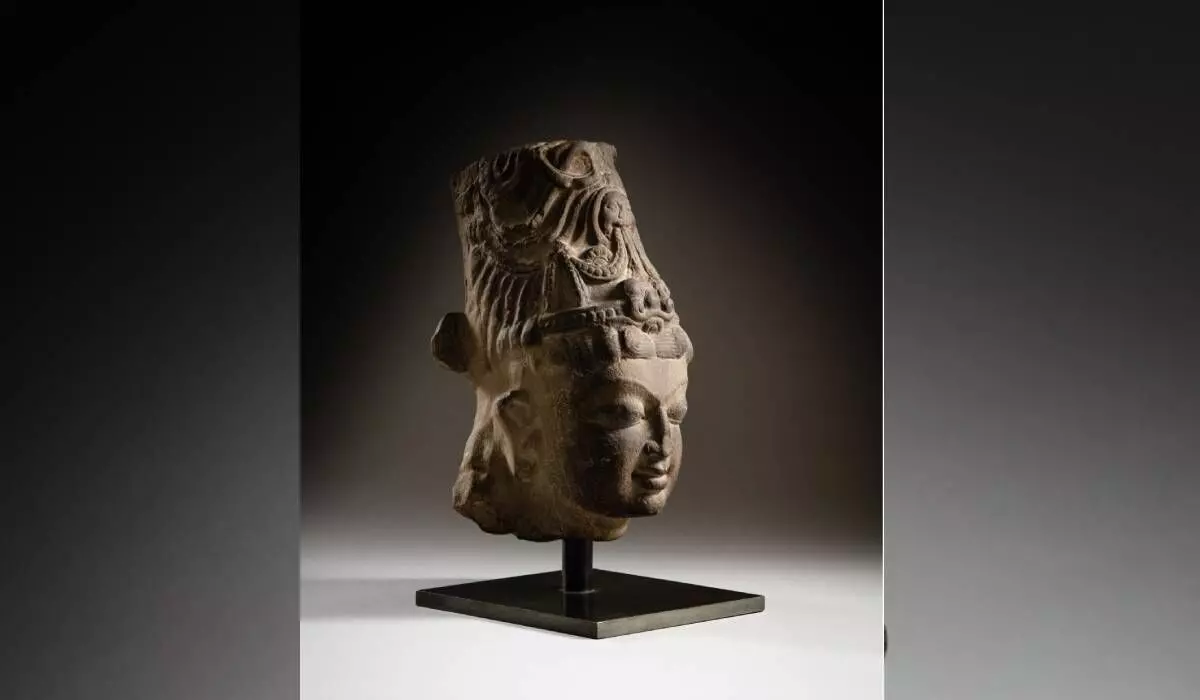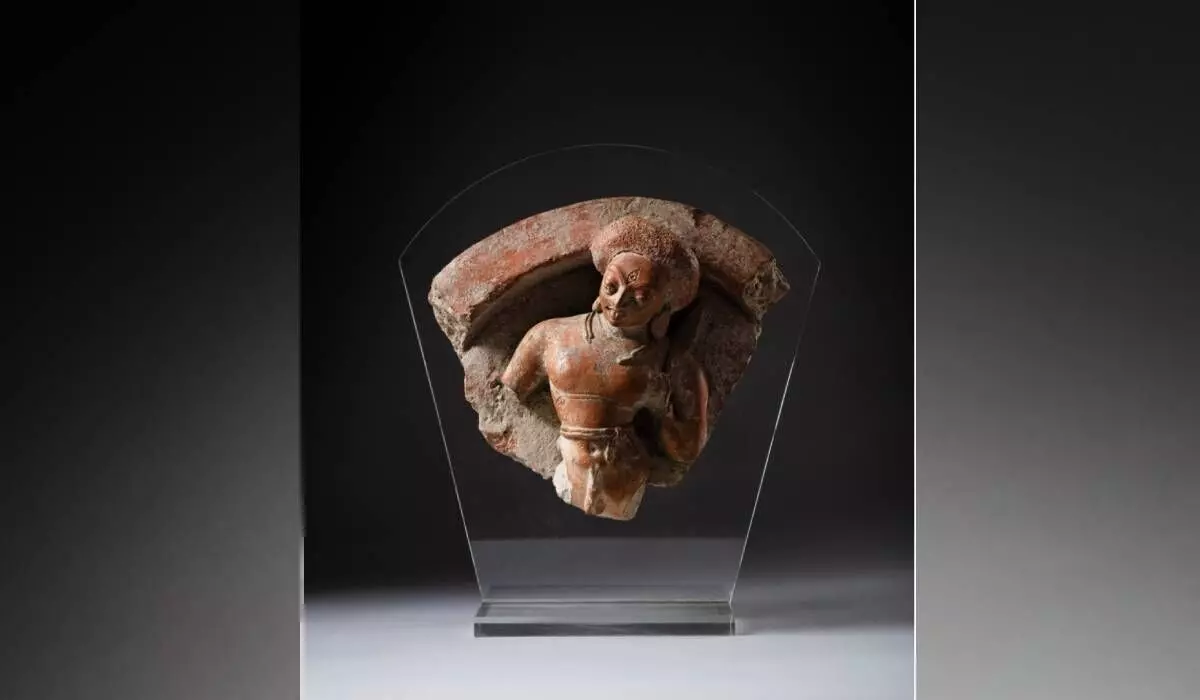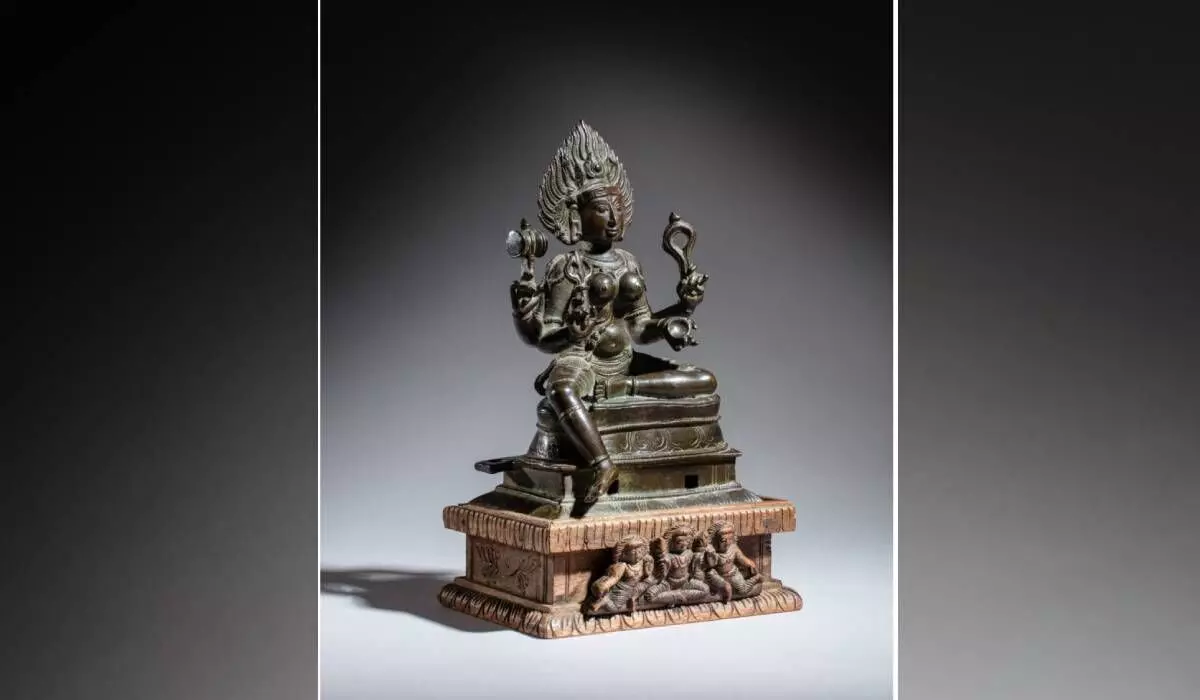Re-focusing on India’s historical art treasures
A Gupta period terracotta torso of Shiva was the oldest Indian artwork on offer at a recently-concluded auction of historical arts of Asia
image for illustrative purpose
The buzz around modern and contemporary Indian art is always so strong, especially when nearing an auction, that India’s historical arts are deprived of the focus they truly deserve. It’s open knowledge that India’s unfathomed cultural legacy since ancient times has been the subject of international loot - through invaders, colonial masters and charlatans of great variety - since centuries, in which Indians too have been complicit with the prospect of making a quick buck in mind.
It's heart-rending often to see priceless works of Indian art appear in international auctions regularly, where their traceable provenance often leads to some European collection in the 18th-19th centuries. Of course, a big portion of it must have been legitimately acquired, and the pieces that appear in auctions have solid, legitimate provenance trail behind them. Yet, one can safely conjecture that some Indian heritage must have left the shores of the subcontinent through actionable means.
This week, I would like to focus on some pieces of Indian art - not modern or contemporary but of immense historical value - that were recently auctioned at Sotheby’s Arts d’Asie (Arts of Asia) auction in Paris on June 15. In an auction comprising a total of Two Hundred Forty One lots and dominated by Chinese artefacts, there eleven pieces of Indian origin. The oldest Indian piece - a terracotta torso of Shiva - dated to the Gupta period, circa 5th century CE. It’s unimaginable what must be the feeling to hold, or even just behold, a piece as ancient as that.
An Idol of Uma from Chola period
The lot from amongst Indian works of art that was instantly eye-catching and sold well, above its high pre-auction estimate, was an absolutely exquisite bronze figure of Uma, South India, Chola period, circa 11th century. Measuring 66 cm (26 in.) high, it came to the auction from the property of a private French collection. Before the auction, it was estimated at €50,000 – €70,000 but sold for €95,250 or approx. Rs 85.40 lakh.
It's a beautiful rendition of Uma or Parvati, or Lord Shiva’s consort with elaborate clothing, jewellery and hairdo. She stands on a lotus pedestal in a tribhanga pose; the gentle curves of her limbs attest to the great craftsmanship of the creators of Chola bronzes that make them prized possessions to this day. It’s interesting that the pedestal is fitted with rings at each corner, perhaps, to facilitate the movement of the idol in a procession.
Kali in Bronze from Vijayanagara period
The next best Indian lot was the idol of another revered goddess, Kali, again in bronze but from the Vijayanagara period, circa 16th century. This bronze sculpture is a tiny idol on a carved wooden stand, but without the wooden base, measures only 25.3 cm or 10 in. This too came to the auction from a private French collection.
This beautiful sculpture was estimated at €8,000 - €12,000 but was sold way above the estimate for €17,780 or approx. Rs 15.93 lakh.
While Chola bronzes are well-known, Vijayanagara bronzes too have a niche for themselves in the haloed portals of Indian sculpture. As Vijayanagara empire (1336-1565) post-dates the Chola period (Imperial Cholas, under whom the dynasty achieved its apogee, ruled from 848-1070 CE), it is an obvious corollary that the sculptural elements of Vijayanagara bronzes borrowed heavily from, and were an evolution over the Chola bronzes. However, unlike the latter, they were more elaborately ornamented, and the posters were more rigid than those in the Chola idols. In the Kali idol, this slight evolution of ornamentation is evident in the rather different style of hair-do and the crown.
Other Magnificent Treasures
Besides the idols of Uma and Kali, the other works of Indian origin that went down the gavel at the Sotheby’s auction, featured a refreshing mix of heritage pieces from across the subcontinent.
The next best price was achieved by a limestone Shaivite stele (slab) from Uttar Pradesh, circa ninth century. Broken at one end, it appears to have been part of another architectural piece from which it must have been yanked off, though the auction house’s catalogue note does not indicate any such theory.
At a height of 63 cm, or 24.75 in., it is rather an elaborately carved panel, depicting a divine figure flanked by chauri-bearers, a linga above with a kneeling acolyte to the left and a recumbent bull to the right.
Estimated at €3,000 - €5,000, it sold for a whopping €15,240 or approx. Rs 13.66 lakh. It came to the auction from the collection of Adrian Maynard (d. 1991), chairman of Spink and Son Ltd., London.
Another magnificent work from India that went above its auction estimate was an imposing stone head of Vishnu, North India, 11th -12th century. With a height of 27.5 cm or 10 7/8 in., it came to the auction table from a private French collection. It was estimated at €3,000 - €5,000 but fetched almost double the highest pre-auction estimate, garnering €9,525 or approx. Rs 8.53 lakh. It’s the elaborate gear on the stone head that makes it instantly captivating.
The most important highlight from the Indian section was, without doubt, the terracotta torso of Shiva, dating to the 5th century CE or the Gupta period. It was the oldest lot on offer among the Indian works of art. Estimated at €3,000 – €5,000, it sold for €7,620 or approx. Rs 6.83 lakh. Again, it hailed from a private French collection, and has been auctioned before. Measuring 28 cm or 11 in. in width, it’s awe-inspiring as by merely looking at the fragmented sculpture, one is instantly connected to ancient Indians, who lived 1600 years ago, but whose arts and crafts continue to be celebrated in the world today.
Quite charming was a bronze kneeling figure of Hanuman from South India, circa 16th century, that was estimated at €2,000 – €4,000 but was sold for €6,350 or approx. Rs 5.69 lakh. An inscribed Jain shrine, either from Rajasthan or Gujarat, and inscribed Samvat 1512 (1455 CE) went for the same price.
A browse through these stunning pieces of art, with the added characteristic of their immense historical value, makes one feel pride in the stupendous skills of our forefathers, the nameless artists who have left an indelible mark of their greatness for us to cherish.
(The writer is a New Delhi-based journalist and writer, and blogs at www.archanakhareghose.com)


